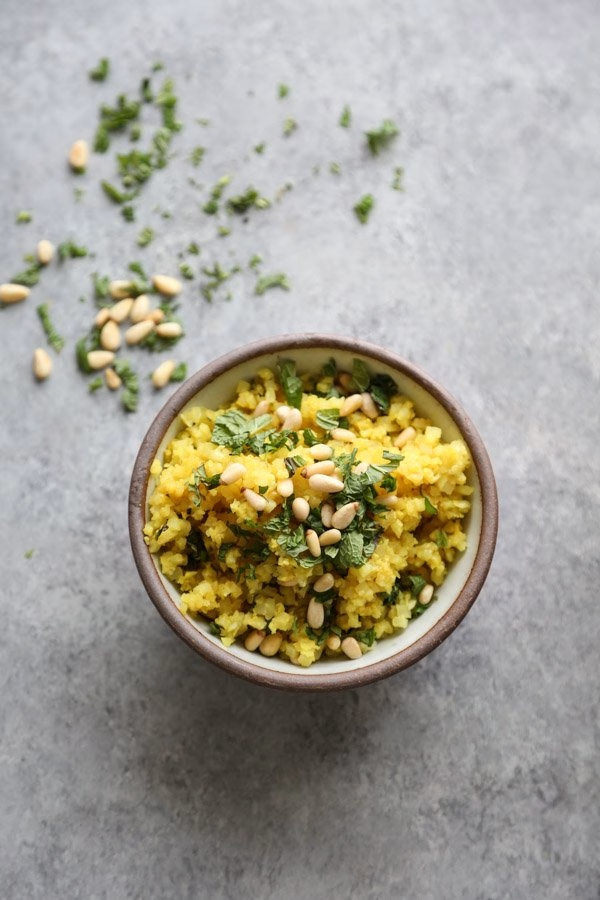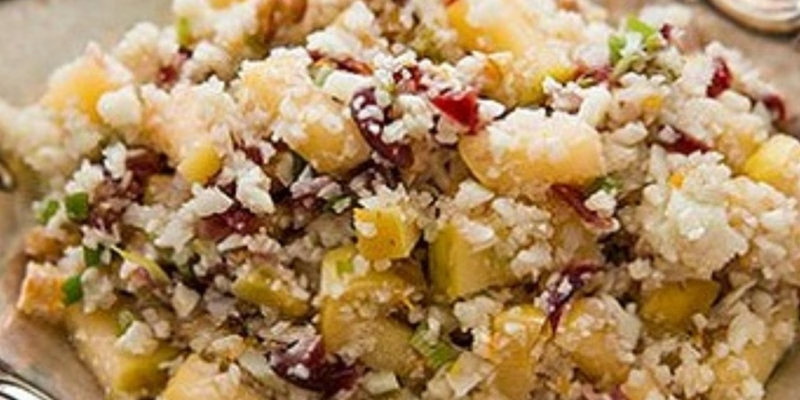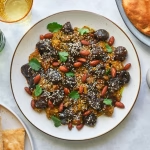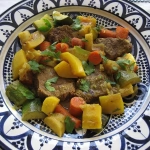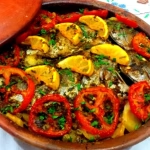
Have you ever tasted Cauliflower Couscous? This delightful dish is taking the culinary world by storm, and for good reason! Born from North African traditions, particularly associated with Moroccan cuisine, cauliflower couscous is a low-carb alternative to traditional grains. With its unique nutty flavor and versatile texture, it’s become a favorite among health enthusiasts and food lovers alike.
In this article, you will dive into the world of Cauliflower Couscous—from understanding its origin to learning how to make it at home. We’ll explore Cauliflower Couscous ingredients, variations, and expert tips on how to enhance its flavor. So, roll up your sleeves, and let’s get cooking!
Ingredients
| Ingredient | Measurement | Description |
|---|---|---|
| Cauliflower | 1 large head | Fresh cauliflower forms the base of this recipe, providing a light, fluffy texture that mimics traditional couscous. |
| Olive oil | 2 tablespoons | Extra virgin olive oil adds healthy fats and enhances the overall flavor of the dish. |
| Garlic | 2 cloves | Fresh garlic enhances the aroma and depth of flavor in Cauliflower Couscous. |
| Vegetable broth | 1 cup | This adds moisture and richness, making the couscous more flavorful. |
| Salt | 1 teaspoon | Essential for balancing flavors, salt is a key ingredient in any dish. |
| Pepper | 1/2 teaspoon | A pinch of black pepper gives a subtle kick to your homemade Cauliflower Couscous. |
| Chopped parsley | 1/4 cup | Fresh parsley adds color and freshness, bringing a delicious finish to the dish. |
Step-by-Step Instructions
- Step 1: Prepare the Cauliflower – Start by removing the leaves and stems from the cauliflower. Cut it into smaller florets. Using a food processor, pulse the florets until they resemble grains of couscous. Be careful not to over-process; you want a nice texture!
- Step 2: Sauté the Garlic – In a large skillet, heat the olive oil over medium heat. Add minced garlic and sauté until fragrant, about 30 seconds. You’re going to love the aroma!
- Step 3: Cook the Cauliflower – Add the riced cauliflower to the skillet. Pour in the vegetable broth, salt, and pepper. Stir well, cover, and let it cook for about 5-7 minutes or until the cauliflower is tender and has absorbed the flavors.
- Step 4: Finish with Fresh Herbs – Once cooked, remove the cover and fluff the cauliflower couscous with a fork. Stir in the chopped parsley for a burst of freshness.
- Step 5: Serve and Enjoy – Plate your Cauliflower Couscous warm, and feel free to pair it with grilled chicken, roasted vegetables, or your favorite sauce for added flavor.
Pro Tips
- Try Different Spices: Don’t hesitate to experiment! Add cumin, coriander, or even a pinch of cinnamon for an exotic twist on Cauliflower Couscous.
- Make It a Meal: Boost the nutritional content by adding sautéed vegetables like bell peppers, zucchini, or even chickpeas for a protein punch.
- Storage: Store any leftovers in an airtight container in the fridge for up to 3 days. You can reheat it in the microwave or on the stovetop.
Nutritional Information
| Nutritional Component | Per Serving |
|---|---|
| Calories | 70 |
| Protein | 3g |
| Carbohydrates | 5g |
| Saturated Fats | 1g |
| Fiber | 2g |
| Cholesterol | 0mg |
| Sugars | 2g |
| Fat | 5g |
FAQs
What is the best way to store Cauliflower Couscous?
Store in an airtight container in the fridge for up to three days. Reheat gently before serving.
Can Cauliflower Couscous be made vegan or gluten-free?
Absolutely! This recipe is already gluten-free and can be made vegan by ensuring any broth used is plant-based.
What are the best side dishes to serve with Cauliflower Couscous?
Great companions include grilled vegetables, spiced meats, or a zesty green salad.
How long does it take to prepare Cauliflower Couscous?
Preparation and cooking together take about 15-20 minutes, making it a quick and easy option!
Can I freeze Cauliflower Couscous for later?
Yes! You can freeze it in an airtight container for up to a month. Just reheat when you’re ready to eat!
Is Cauliflower Couscous a low-carb option?
Yes, it’s a fantastic low-carb alternative that allows you to enjoy a similar texture to traditional couscous without the carbs.
What can I add to enhance the flavor of Cauliflower Couscous?
Consider adding nuts for crunch, dried fruits for sweetness, or spices for warmth to kick things up a notch!
How do I know when my Cauliflower Couscous is fully cooked?
It should be tender but still have a bit of bite to it. Taste-testing is encouraged!
In conclusion, Cauliflower Couscous is not just a tasty dish; it’s a canvas for your culinary creativity. With its versatility and nutritional benefits, it’s a fantastic option for anyone looking to cut carbs without sacrificing flavor. So, why not give it a try at home? It’s easy, quick, and absolutely delicious!
Tried this Cauliflower Couscous recipe? Let us know your experience in the comments!
